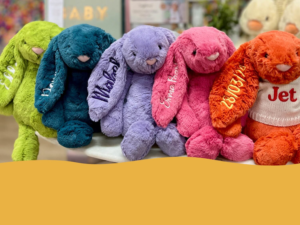
light pink
Introduction to Light Pink: Beyond the Color Wheel
Light pink is more than just a pastel shade—it’s a color with depth, meaning, and surprising versatility. Associated light pink with femininity, innocence, and tenderness, light has long been seen as a gentle and soothing hue. But beyond its softness, light carries a sense of modernity, calm, and even rebellion in its subtlety. In this article, we’ll dive deep into what makes light such a powerful color. From its psychological impacts to its use in fashion, design, and branding, light is a color worth paying attention to.
Light pink isn’t just for nurseries or bridal showers; it’s for contemporary art galleries, fashion-forward streetwear, and minimalist interior design. We’ll explore how this unassuming hue can evoke powerful emotions and create meaningful connections in various aspects of life.
The Psychology Behind Light Pink

Color psychology teaches us that colors can affect our emotions, behaviors, and even our physiological responses. Light pink, often referred to as a calming color, has a particularly fascinating psychological impact.
The Calm of Light Pink
Light pink is often associated with relaxation and peace. It’s the softer cousin of the bold, romantic red, offering a more gentle and approachable version of its vibrant counterpart. Studies have shown that soft pink hues can reduce aggression and create a calming atmosphere. For this reason, light has been used in environments like prisons and hospitals to instill a sense of peace and tranquility. Known as the “pink effect,” the color can literally lower heart rates and create a calming influence on people exposed to it.
Emotional Warmth and Affection
Apart from calmness, light conveys warmth and love. It’s a color that naturally feels welcoming and nurturing, making it perfect for spaces where you want to evoke feelings of comfort. From children’s rooms to spa environments, light pink signals care, softness, and vulnerability. It invites people to feel safe, loved, and at ease.
Pink in Modern Psychology
In modern psychology, light pink has taken on new meanings, moving beyond its traditional associations. It is now seen as a color that represents both resilience and kindness. The duality of light —soft yet strong—has led it to be embraced in progressive movements that champion gender inclusivity and challenge traditional color norms.
Light Pink in Fashion: Classic Yet Contemporary
When it comes to fashion, light pink has always been a staple. While it was once reserved for women’s clothing or the occasional “baby shower” aesthetic, light has crossed gender lines and become a fashion-forward color that shows up on runways, in streetwear, and beyond.
A Symbol of Femininity and Grace
Historically, light pink has been closely associated with femininity. From ballerina costumes to satin dresses, the color evokes elegance, poise, and a gentle kind of beauty. Designers often turn to light when they want to create a look that’s soft, romantic, or timeless. Light wedding dresses and prom gowns are still immensely popular, especially among those who want a softer look that still feels chic and sophisticated.
Light Pink Goes Gender-Neutral
In recent years, light pink has shed its strictly “feminine” label and become a symbol of gender fluidity. With the rise of gender-neutral fashion, light has found its place in the wardrobes of people of all genders. Whether it’s a light bomber jacket or a pair of sneakers, men, women, and non-binary individuals are embracing the color in fresh, contemporary ways. The shade adds an element of playfulness and modernity without overpowering the rest of the outfit.
Seasonal and Year-Round Fashion
Light pink is incredibly versatile in fashion because it works well in all seasons. In spring and summer, light can evoke images of blooming flowers and warm sunsets. It can easily be paired with white, tan, or even vibrant colors like orange or turquoise for a fun, lively outfit. In fall and winter, light takes on a more muted tone, pairing well with deep browns, greys, and blacks for a cozy, sophisticated look. Whether it’s used in accessories, footwear, or full outfits, light can be incorporated year-round in stylish ways.
Interior Design: Light Pink’s Soothing Power in the Home
The trend of using light pink in interior design has surged over the past decade. This color, once deemed too “girly” or “immature,” has evolved into a design choice that brings warmth and sophistication to any space. Interior designers have recognized that light can add subtle elegance and tranquility to homes, making it an ideal color for various styles.
Creating Calm Spaces
In bedrooms and living spaces, light pink can create a serene, calming atmosphere. Soft blush tones, particularly when paired with neutral shades like white, grey, or beige, can make a space feel larger, lighter, and more welcoming. It’s no wonder light pink has become a go-to color for those who want their homes to feel like a peaceful retreat. Whether it’s a statement wall or just a few accents, light pink can make a big impact without overwhelming the space.
Minimalist Yet Inviting
Light pink also fits seamlessly into minimalist and Scandinavian design aesthetics, where less is more, but warmth is still essential. This muted color adds a hint of color without cluttering the aesthetic. Light subdued nature allows it to be integrated into clean, minimalist environments, softening the stark lines and hard materials that often dominate these design styles. You’ll often see light paired with materials like wood, linen, and marble, creating a look that’s both modern and inviting.
Art Deco and Vintage Appeal
In contrast to minimalist design, light has also found a home in more eclectic and vintage spaces. Art Deco-inspired interiors, for instance, often use light ink alongside bold colors like gold, black, and emerald green. This combination creates a sense of glamour and sophistication, reminiscent of the opulent 1920s. Vintage-inspired décor, on the other hand, often uses light to evoke nostalgia, adding a retro charm to spaces decorated with classic furniture, floral patterns, and soft textures.
Light Pink in Branding and Marketing
When brands choose their color palette, every shade serves a purpose. Light pink, in particular, has become a strategic choice for companies looking to convey specific messages about their brand.
Appealing to Emotions
Brands that use light pink often want to tap into the emotional responses this color evokes. As mentioned earlier, light pink brings to mind feelings of warmth, affection, and calm. It can soften a brand’s image, making it feel more approachable and compassionate. For companies in industries like wellness, beauty, and healthcare, light pink can be a powerful tool to create a sense of care and trust among their customers.
Differentiation and Modernity
In a sea of bold reds, blues, and blacks, light pink stands out as something different. Brands that want to differentiate themselves from competitors might use light pink as a way to create a unique, memorable identity. Whether it’s in logo design, packaging, or advertisements, the color can help a brand appear more modern, innovative, and cutting-edge. This is especially true in tech and lifestyle industries, where minimalism and modernity are key.
Gender-Neutral Messaging
Many brands, particularly those in fashion, lifestyle, and beauty, are moving towards gender-neutral marketing. Light pink, once a symbol of traditional femininity, is now being used in gender-inclusive branding strategies. Brands are breaking down old gender stereotypes and using light pink to appeal to a wider audience. This shift has helped light pink lose its “feminine only” label, turning it into a color that represents inclusion, progress, and forward-thinking.
The Evolution of Light Pink in Popular Culture
Throughout history, light pink has evolved alongside society. From its origins in the fashion world to its place in modern-day pop culture, light has transformed from a niche color to a mainstream phenomenon.
Light Pink and the Feminist Movement
In the early 20th century, pink wasn’t necessarily associated with femininity. It was seen as a strong, bold color that was just as fitting for boys as for girls. However, as societal norms shifted, so did the meaning of colors. By the mid-20th century, pink had become synonymous with girlhood, often relegated to baby clothes, toys, and children’s décor.
But today, light is being reclaimed as a color of empowerment. Feminist movements have embraced pink, using it as a way to challenge outdated gender norms. It has become a symbol of strength, resilience, and the breaking down of stereotypes, proving that pink is not “just a girl’s color”—it’s a color for anyone who dares to wear it.
Celebrity Influence on Light Pink
Celebrities have also played a huge role in the resurgence of light . From Rihanna’s iconic pink Met Gala dress to Kanye West’s Yeezy collections, light has made a significant impact in pop culture. These influencers have helped redefine what it means to wear pink, showing that the color can be bold, edgy, and powerful.
Light Pink in Film and Media
In the world of film and media, light is often used as a visual cue to convey innocence, romance, or softness. However, filmmakers and artists have also subverted this expectation, using light in darker, more complex narratives. For instance, films like Marie Antoinette by Sofia Coppola and The Grand Budapest Hotel by Wes Anderson use light as a central color in their cinematography, creating a whimsical yet deeply impactful visual aesthetic.





